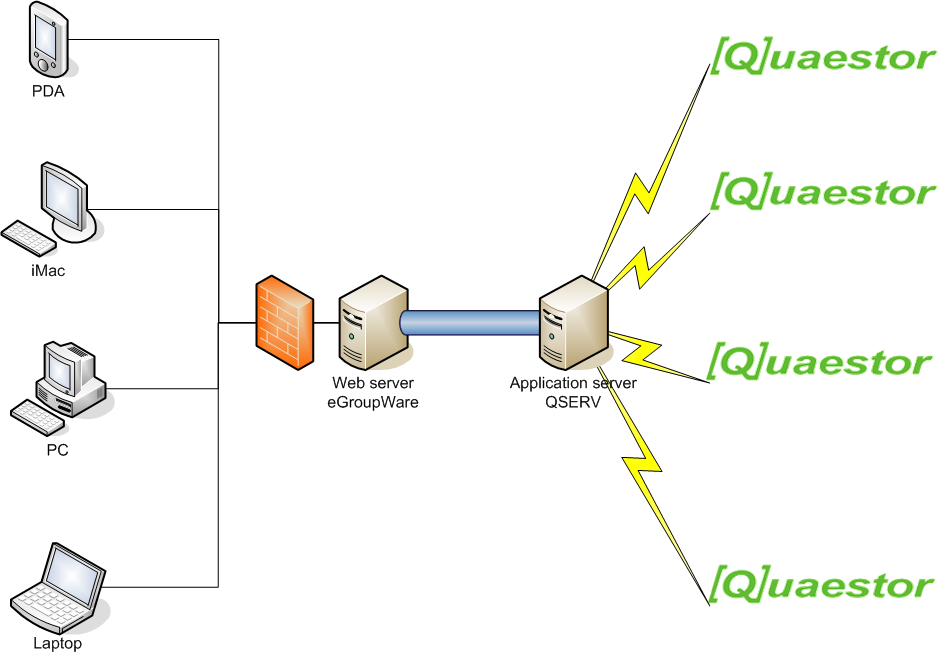
Web-based applications use the server version of Quaestor. This Quaestor server version (QSERV+HeadlessQ) has most of the functionality of the client version.
This means that most of the the classic knowledge based applications and Scenario based applications will work as web-based applications. The ambition of Qnowledge is to make all type of knowledge bases also work as web-based applications.
The main architecture can schematically be presented like this:

The web-based system can be divided into three parts:
The browser of the user makes contact with the web server for a request to start a calculation. The web server creates a session with the browser of the user, provides feedback to the user (an hour glass) and makes contact with the application server with the same request. The application server creates a session with the web server, gives feedback to the web server (the session ID) and starts a Quaestor session with a project and a knowledge base in correspondence with the requested calculation.
The moment this Quaestor session requires input, it will tell the session of the web server, which will tell the session of the browser. The browser present the form to fill in by the user, the browser submits the input to the web server and the web server sends it to Quaestor (all to the correct sessions). This will continue until a result is achieved.
All parts in this process are scalable. This means that you can have several users, several web servers and several application servers working with each other. Furthermore, Quaestor is able to contact the Quaestor server enabling to use web-based applications as part of a local knowledge base.
For more about the examples go to Web based examples.